Safety in Hiking: Do You Know the Basics?
Hiking is a fantastic way to connect with nature, get some exercise, and clear your mind. However, it’s essential to prioritize safety while enjoying the great outdoors. After all, the beauty of nature can sometimes be deceptive, hiding potential dangers that could turn your adventure into a nightmare. So, do you know the basics of hiking safety? Understanding the key principles can not only help you avoid accidents but also enhance your overall hiking experience.
First and foremost, let’s talk about preparation. Before you even lace up your hiking boots, you need to assess your skills and the difficulty of the trail you plan to tackle. Are you a novice or a seasoned hiker? Choosing a trail that matches your fitness level is crucial. Remember, just because a trail looks beautiful in pictures doesn’t mean it’s suitable for everyone. Always check trail ratings and reviews to gauge what you’re getting into.
Next on the list is gear. The right equipment can make all the difference between a pleasant hike and a perilous one. Essential items include sturdy hiking boots, weather-appropriate clothing, a reliable backpack, and navigation tools such as a map or GPS device. Don’t forget to pack plenty of water and snacks to keep your energy levels up. It’s like preparing for a mini-expedition; you wouldn’t set sail without a life jacket, right?
Additionally, understanding trail conditions is vital for a safe hiking experience. Weather can change in the blink of an eye, and knowing how to read the signs can save you from getting caught in a storm. For instance, if dark clouds start rolling in, it’s wise to rethink your plans. Familiarize yourself with the terrain and any potential hazards like steep drops or slippery rocks. Awareness is your best friend out there!
Speaking of weather, let's dive deeper into how it impacts your hike. Always check the forecast before you head out. If rain is on the horizon, you’ll want to be equipped with waterproof gear. Similarly, hiking in snow requires special considerations, such as wearing insulated boots and carrying trekking poles for stability. On the flip side, during hot summer days, sun protection is a must. Sunscreen, hats, and plenty of water can help you avoid heat exhaustion.
Another important aspect of hiking safety is trail etiquette. Respecting fellow hikers and the environment can create a safer and more enjoyable experience for everyone. For example, yield to those going uphill and keep noise levels down to preserve the tranquility of nature. Remember, you’re not just hiking for yourself; you’re part of a larger community that values the outdoors.
Lastly, let’s talk about emergency preparedness. Accidents can happen, no matter how careful you are. Before you set off, create a hiking plan and share it with someone who isn’t going with you. This way, if something goes wrong, someone will know where to look for you. Packing a first aid kit is also essential; knowing how to handle minor injuries can make a significant difference in an emergency.
In conclusion, hiking is an exhilarating activity that offers countless benefits, but safety should always come first. By understanding the basics of hiking safety, you can enjoy your adventures without unnecessary worries. So, are you ready to hit the trails armed with this knowledge? Let’s get out there and explore the beauty of nature, while keeping safety at the forefront!
- What should I do if I get lost on a hike? Stay calm, retrace your steps if possible, and use your map or GPS to find your way back. If you can't find your way, stay put and wait for help.
- How can I prepare for a hiking trip? Research your trail, check the weather, pack the right gear, and inform someone about your plans.
- What are the signs of heat exhaustion? Symptoms include heavy sweating, weakness, dizziness, nausea, and headache. If you experience these, find shade, hydrate, and rest immediately.
- Is it safe to hike alone? While it can be safe, hiking with a buddy is generally recommended for safety reasons. Always inform someone of your plans if you do hike alone.
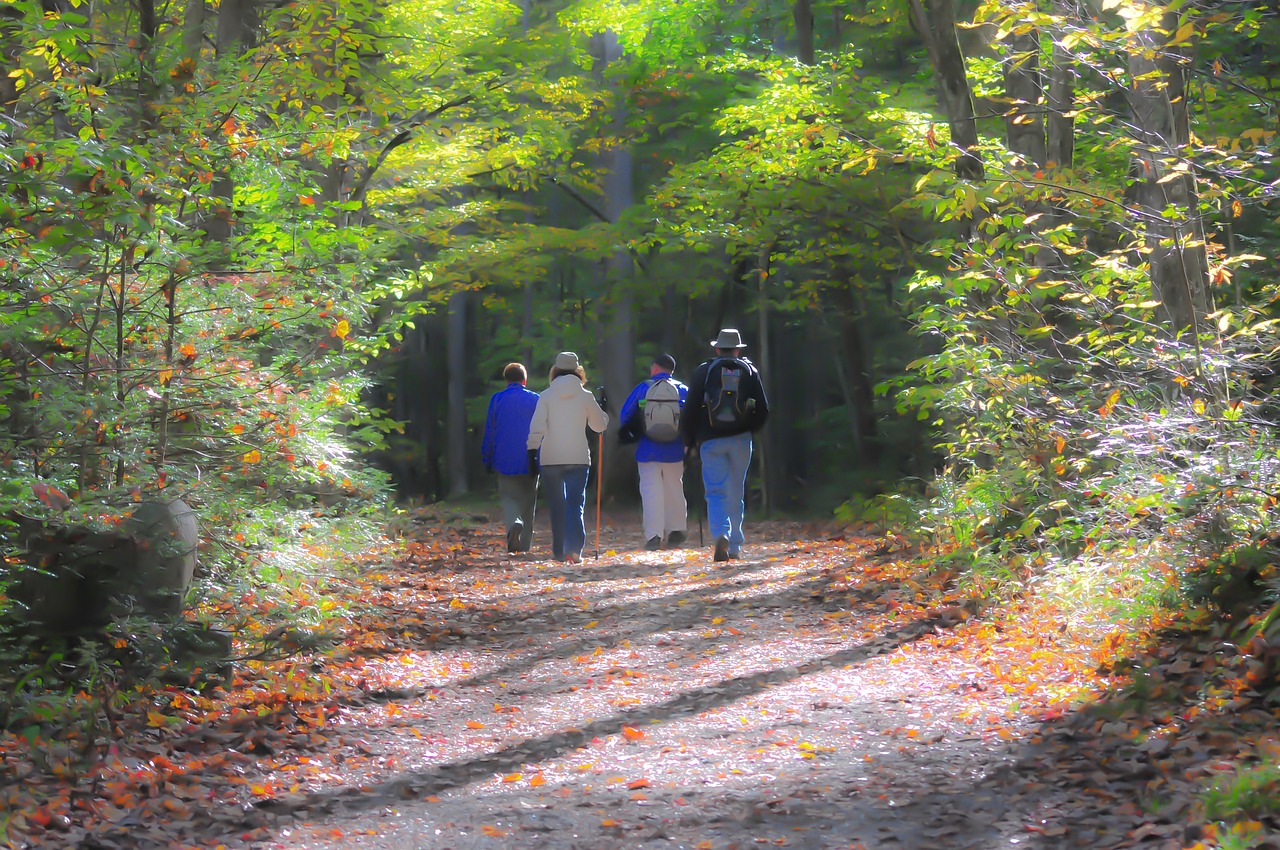
Essential Gear for Hiking Safety
When it comes to hiking, the right gear can be the difference between a thrilling adventure and a potential disaster. Imagine setting out on a beautiful day, surrounded by nature, only to find yourself unprepared for the unexpected. That’s why investing in essential hiking gear is not just a smart choice—it's a crucial one. The items you carry can protect you from the elements, keep you comfortable, and even save your life in emergencies.
First and foremost, a good pair of hiking boots is your best friend on the trail. These boots should provide ample support and traction, preventing slips and falls on uneven terrain. Think of them as your trusty steed, carrying you safely across rocky paths and muddy trails. Additionally, don’t overlook the importance of moisture-wicking socks. They help to keep your feet dry and blister-free, which is vital for long hikes.
Next up is clothing—layering is key! The weather can be unpredictable, so wearing layers allows you to adjust your clothing according to temperature changes. Start with a moisture-wicking base layer, add an insulating layer like fleece, and finish with a waterproof outer layer to shield yourself from rain or wind. This approach keeps you comfortable and ready for whatever Mother Nature throws your way.
Another essential item is a well-stocked backpack. Your backpack should be lightweight yet spacious enough to carry all your gear without weighing you down. Inside, make sure to pack the following essentials:
- Water: Staying hydrated is crucial. A hydration bladder or water bottles should be easily accessible.
- Snacks: High-energy snacks like trail mix or energy bars can keep your energy levels up during long hikes.
- Navigation tools: A map and compass, or a GPS device, can help you stay on track.
- First aid kit: A basic first aid kit can be a lifesaver in case of minor injuries.
Don’t forget about safety gear! A multi-tool or knife can be incredibly useful for various tasks, from preparing food to making repairs. Additionally, a whistle can be a lifesaver if you find yourself lost or in need of assistance. It’s a small item that carries a lot of weight in terms of safety.
Finally, let’s talk about visibility. A good headlamp or flashlight is essential, especially if your hike might extend into the evening. Having a reliable light source can help you navigate safely and avoid accidents in low visibility. Think of it as your guiding star, illuminating the path ahead and keeping you safe from unseen obstacles.
In summary, being well-equipped for your hike not only enhances your experience but also significantly boosts your safety. So, before you lace up those boots and hit the trail, take a moment to ensure you have all the essential gear packed away. After all, a little preparation goes a long way in making your hiking adventure enjoyable and safe!
Q: What is the most important gear for a beginner hiker?
A: While all gear is important, a good pair of hiking boots and a reliable backpack are the most crucial for beginners.
Q: How do I know if my gear is suitable for the trail conditions?
A: Always check trail reviews and weather forecasts. Your gear should be appropriate for the terrain and weather you expect to encounter.
Q: Can I hike without a first aid kit?
A: It's not advisable. A first aid kit can help address minor injuries and prevent them from becoming serious issues.
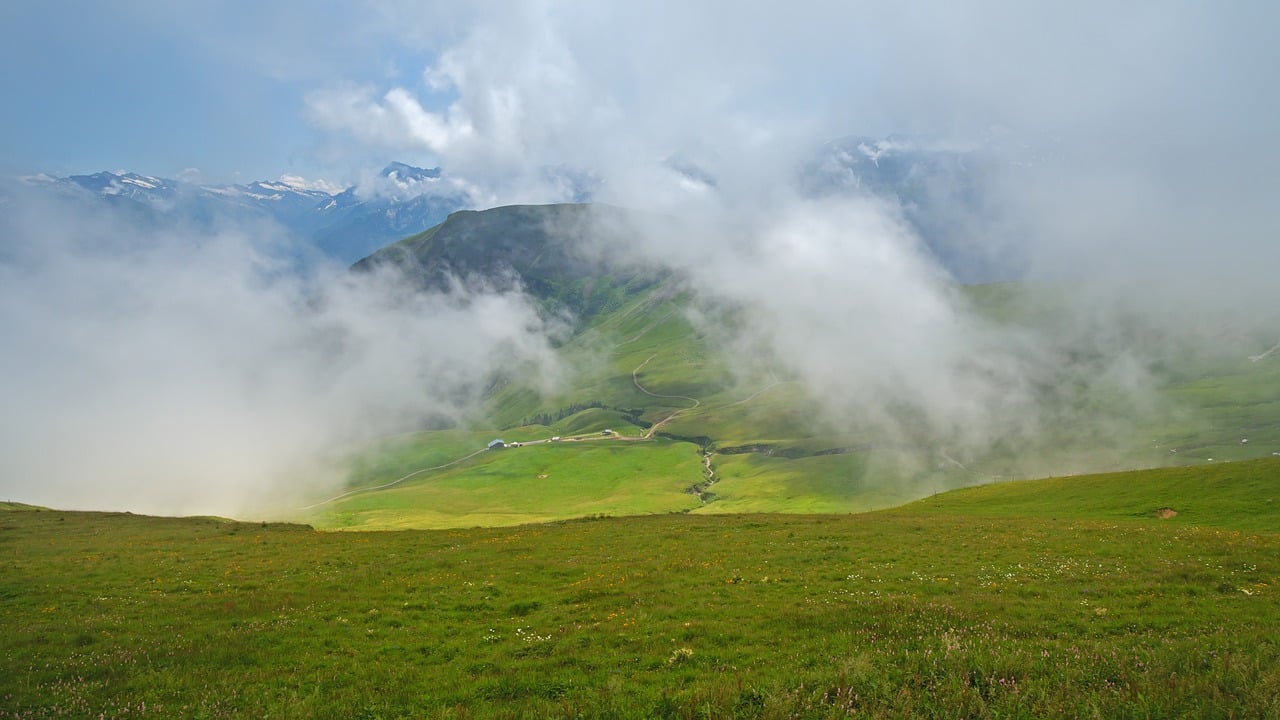
Understanding Trail Conditions
Before you lace up your hiking boots and head out into the wild, it's crucial to understand the trail conditions you might encounter. Just like a chef wouldn’t start cooking without checking the recipe, a hiker shouldn’t hit the trails without assessing the environment. The conditions of the trail can dramatically affect your hiking experience, from the ease of navigation to your overall safety. Whether you’re a seasoned pro or a weekend warrior, understanding these factors can make all the difference.
First off, the weather plays a significant role in trail conditions. A sunny morning can quickly turn into a stormy afternoon, and being caught unprepared can lead to dangerous situations. Always check the weather forecast before you go. Look for not just the temperature but also for warnings about thunderstorms, high winds, or unexpected snow. If you’re hiking in a mountainous area, remember that conditions can change rapidly, so keep an eye on the sky. A good rule of thumb is to assess the clouds—dark, heavy clouds can indicate an approaching storm.
Next, let’s talk about terrain. Different trails offer varying levels of difficulty based on their surface and incline. Some trails are well-maintained and easy to navigate, while others can be rocky, muddy, or steep. If you’re planning to hike in an area that you’re unfamiliar with, it’s wise to do a bit of research. Websites and apps like AllTrails provide user-generated reports on trail conditions, so you can get a sense of what to expect. Additionally, if you’re venturing into remote areas, consider checking with local ranger stations for the latest updates on trail conditions.
And don’t forget about trail maintenance. Some trails are regularly maintained by local hiking clubs or park services, while others may be neglected. Overgrown vegetation, fallen trees, or washed-out paths can create unexpected challenges. If you encounter a trail that looks less traveled, be prepared for potential obstacles. A good practice is to carry a small folding saw or a multi-tool in case you need to clear minor debris from your path.
So, how do you prepare for these varying conditions? Here are some quick tips:
- Research the trail ahead of time.
- Check for recent trail reports or user reviews.
- Pack appropriate gear based on the conditions (e.g., trekking poles for steep or uneven terrain).
- Be ready to turn back if conditions become unsafe.
In summary, understanding trail conditions is not just about enhancing your hiking experience; it’s a matter of safety. By keeping an eye on the weather, assessing the terrain, and being aware of trail maintenance, you can ensure that your hike is not only enjoyable but also safe. Remember, the great outdoors is unpredictable, and being prepared is your best defense against the unexpected!
Q: How can I find out about current trail conditions?
A: You can check local hiking websites, apps like AllTrails, or contact local ranger stations for the most up-to-date information on trail conditions.
Q: What should I do if the weather changes while I’m hiking?
A: If you notice a sudden change in weather, assess your situation. If conditions become dangerous, it’s best to turn back or seek shelter if possible.
Q: How do I know if a trail is suitable for my skill level?
A: Research the trail’s difficulty rating, read reviews from other hikers, and consider your own experience and fitness level before attempting a hike.
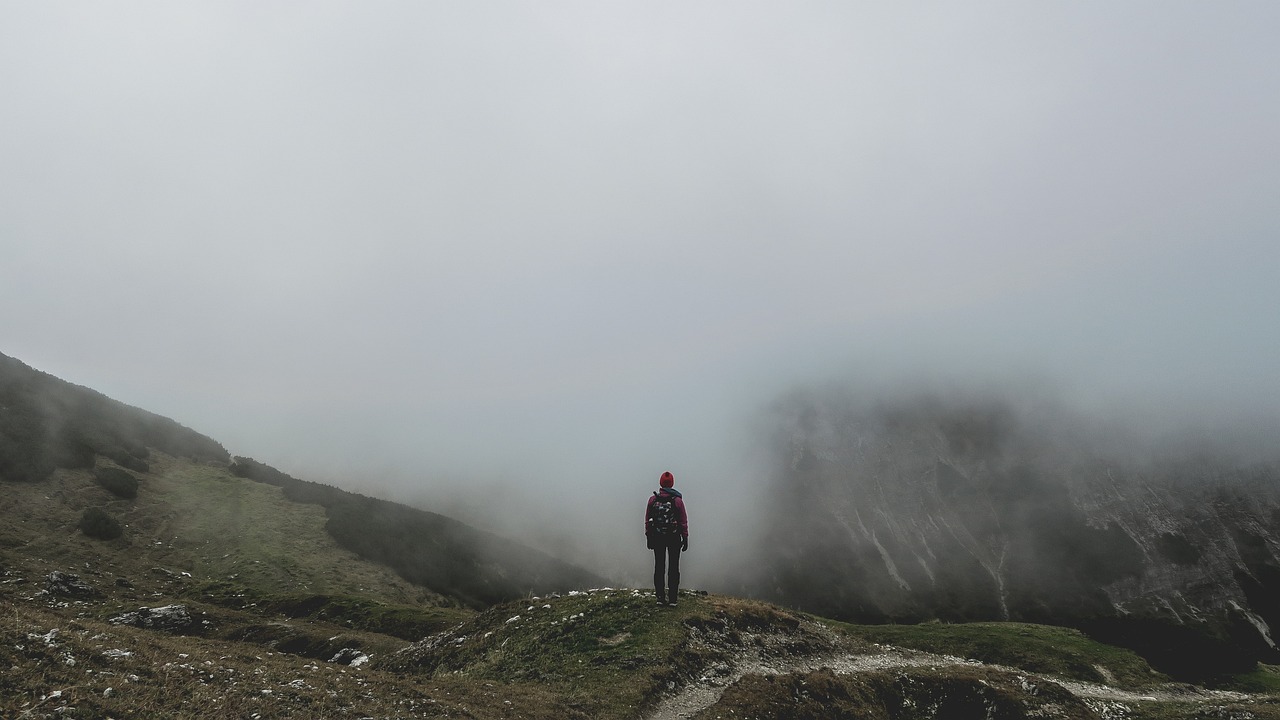
Weather Awareness
When it comes to hiking, one of the most critical aspects to consider is the weather. Just like a painter needs to understand the colors on their palette, hikers must be aware of the atmospheric conditions that can drastically affect their outdoor adventure. Weather can change in the blink of an eye, transforming a sunny day into a stormy ordeal. Therefore, checking the forecast before you set out is not just a good idea; it’s a necessity!
Imagine you’re all geared up, excited to conquer that scenic trail you’ve been eyeing for weeks. You step outside, and the sun is shining bright, but did you check the weather report? A sudden downpour or a gusty wind can turn your picturesque hike into a slippery nightmare. This is why understanding the forecast is paramount. Look for key indicators like:
- Temperature fluctuations
- Chance of precipitation
- Wind speed and direction
- Severe weather warnings
In addition to checking forecasts, it’s wise to familiarize yourself with the local climate. Different regions have distinct weather patterns that can affect your hike. For instance, mountain trails can experience sudden weather changes, while coastal hikes might be more prone to fog. Being aware of these patterns helps you prepare adequately, ensuring that you’re not caught off guard.
So, what should you do if you find yourself in less-than-ideal weather conditions? First and foremost, trust your instincts. If the sky looks ominous, it might be best to postpone your hike. However, if you’re already on the trail and the weather turns sour, here are a few tips to keep in mind:
- Seek shelter if lightning strikes.
- Stay low during high winds.
- Dress in layers to adapt to temperature changes.
- Keep your gear dry to maintain warmth.
Being aware of the weather is not just about avoiding discomfort; it’s about ensuring your safety. With the right knowledge and preparation, you can tackle any weather condition that comes your way. Remember, a well-prepared hiker is a safe hiker!
Q: How often should I check the weather before my hike?
A: It’s best to check the weather the night before and again on the morning of your hike. Weather can change rapidly, so staying updated is crucial.
Q: What should I do if I get caught in a storm while hiking?
A: If you hear thunder or see lightning, seek shelter immediately. Avoid open areas and tall trees. If possible, head back to a safe location.
Q: How can I prepare for unexpected weather changes?
A: Always carry appropriate gear, such as rain jackets and extra layers. Also, pack a waterproof bag for your belongings and check the weather forecast regularly.
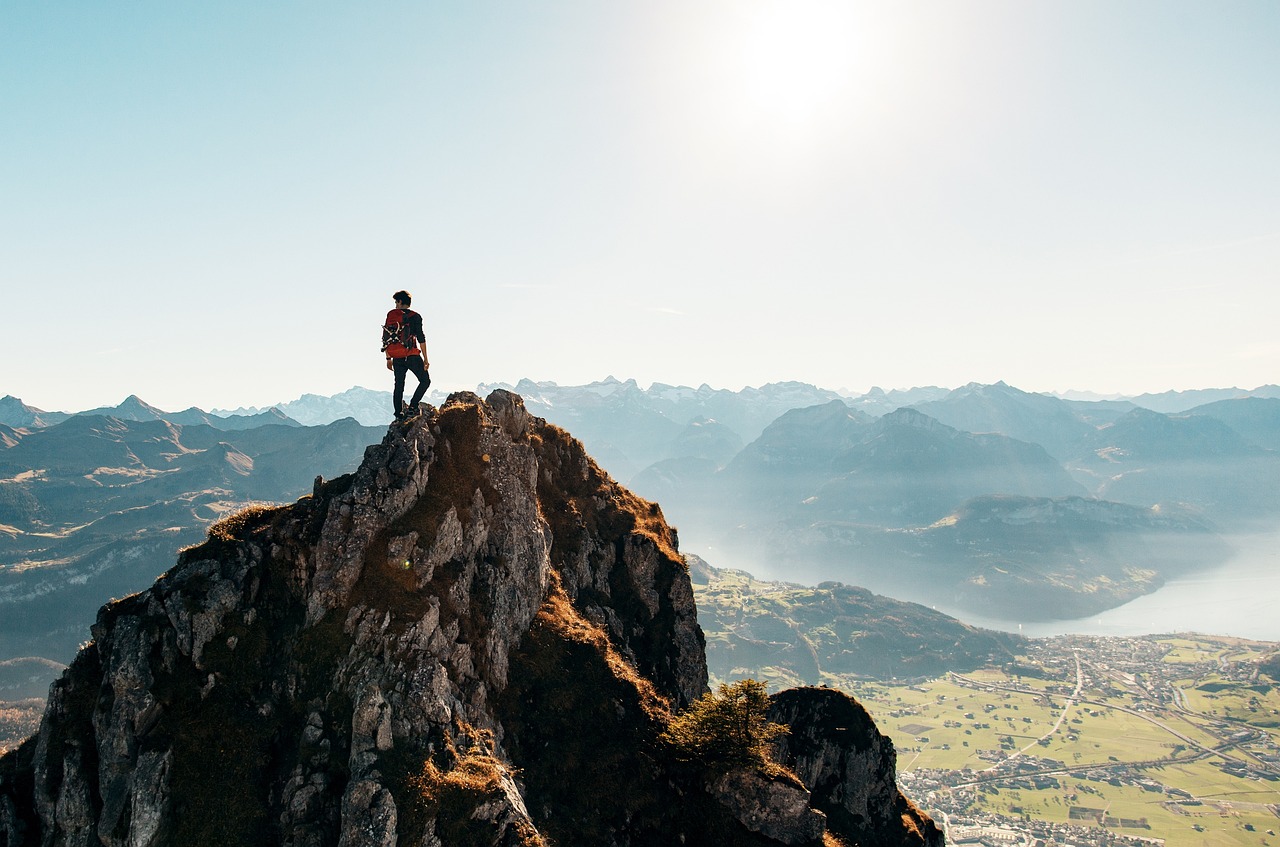
Preparing for Rain and Snow
When it comes to hiking, the weather can be as unpredictable as a cat on a hot tin roof. One minute, you’re basking in the sun, and the next, you’re caught in a downpour or snow flurry. Being prepared for rain and snow is not just about staying dry; it’s about ensuring your safety and comfort on the trail. Here are some essential tips to help you tackle wet and snowy conditions with confidence.
First and foremost, invest in quality waterproof gear. A good waterproof jacket is your best friend in rainy weather. Look for jackets with breathable materials to prevent overheating while keeping the rain out. Pair it with waterproof pants to protect your legs from getting soaked. Remember, your feet are your primary mode of transportation on the trail, so don't skimp on waterproof boots. They should be sturdy, provide good traction, and keep your feet dry. If you’re hiking in snow, consider gaiters, which can help keep snow out of your boots.
Next, pack the right accessories. An umbrella might seem impractical for hiking, but a compact, lightweight one can be a lifesaver in light rain. Also, bring along a pair of waterproof gloves and a hat with a brim to shield your face from rain or snow. Don’t forget to carry a dry bag for your electronics and other gear that shouldn’t get wet. Keeping your essentials dry can make a world of difference in your hiking experience.
When hiking in the snow, it's crucial to understand the concept of layering. Start with a moisture-wicking base layer to keep sweat away from your skin. Add an insulating layer, like fleece, to retain warmth, and finish with your waterproof outer layer. This way, you can adjust your clothing based on your activity level and the weather conditions. Remember, staying dry is key to staying warm.
Finally, always check the weather forecast before heading out. Conditions can change rapidly, especially in mountainous areas. If rain or snow is predicted, consider postponing your hike or choosing a different trail. Safety first! If you do decide to go, let someone know your plans, including your expected return time. This way, if things go awry, someone will know to look for you.
In summary, preparing for rain and snow involves a combination of quality gear, the right accessories, proper layering, and staying informed about the weather. By taking these steps, you can turn a potentially miserable hike into a memorable adventure, no matter what Mother Nature throws your way!
- What should I wear when hiking in the rain?
Wear a waterproof jacket, waterproof pants, moisture-wicking base layers, and waterproof boots. - How can I keep my gear dry while hiking?
Use dry bags or waterproof cases for electronics and pack your gear in waterproof backpacks. - Is it safe to hike in the snow?
Yes, but ensure you have the right gear, including traction devices and warm clothing. - What should I do if I get caught in a storm?
Seek shelter if possible, avoid open areas, and stay calm while waiting for conditions to improve.

Heat and Sun Safety
When you're out there hiking under the blazing sun, it can feel like you're on a quest for treasure, but instead of gold, you might just find yourself battling heat exhaustion or sunburn if you're not careful. It's essential to prioritize your to ensure your adventure remains enjoyable and safe. Imagine hiking up a beautiful trail, surrounded by nature's wonders, but suddenly feeling dizzy or fatigued. That’s not the kind of surprise you want on your hiking trip!
First and foremost, hydration is your best friend when hiking in hot weather. Your body loses water quickly, especially while exerting yourself. Aim to drink at least half a liter of water every hour, and if it's particularly hot, consider increasing that amount. Don’t wait until you’re thirsty to drink; make it a habit to sip water regularly. You can also pack electrolyte-rich drinks to replenish lost minerals, which can be especially beneficial on longer hikes.
Next, let’s talk about clothing. The right attire can make all the difference. Opt for lightweight, breathable fabrics that wick moisture away from your skin. Wearing light-colored clothing can also help keep you cooler, as dark colors absorb more heat. A wide-brimmed hat and UV-blocking sunglasses are essential accessories that provide shade and protect your eyes from harmful rays. Think of your outfit as your armor against the sun’s relentless assault!
Moreover, timing is everything when it comes to hiking in the heat. If possible, plan your hikes for early mornings or late afternoons when temperatures are cooler. Not only will this help you avoid the peak heat, but you’ll also be treated to stunning sunrises or sunsets that will make your hike even more memorable. Just like a well-timed movie scene, the right moment can transform your experience!
Another critical aspect of heat safety is to recognize the signs of heat-related illnesses. Symptoms like excessive sweating, weakness, dizziness, or nausea should not be ignored. If you or a hiking companion starts feeling unwell, it’s crucial to take a break in a shaded area, sip some water, and cool down. In extreme cases, seek medical attention immediately. Remember, your health is the most important treasure you should protect during your adventures!
In summary, hiking in hot weather can be a fantastic experience if you take the necessary precautions. Stay hydrated, wear appropriate clothing, choose the right time for your hike, and be aware of the signs of heat-related illnesses. By following these tips, you can enjoy the great outdoors without the worry of heat and sun issues ruining your adventure. So, gear up, stay smart, and make every hike a memorable journey!
- What should I do if I feel dizzy while hiking? If you feel dizzy, find a shaded area to rest, hydrate, and cool down. If symptoms persist, seek medical assistance.
- How much water should I bring on a hike? A good rule of thumb is to carry at least half a liter of water for every hour of hiking, and more if it's particularly hot.
- Can I wear sunscreen if I’m hiking? Absolutely! Applying a broad-spectrum sunscreen with at least SPF 30 is crucial for protecting your skin from UV rays.
- What are the signs of heat exhaustion? Common signs include heavy sweating, weakness, dizziness, nausea, and a headache. If you experience any of these, take immediate action to cool down.
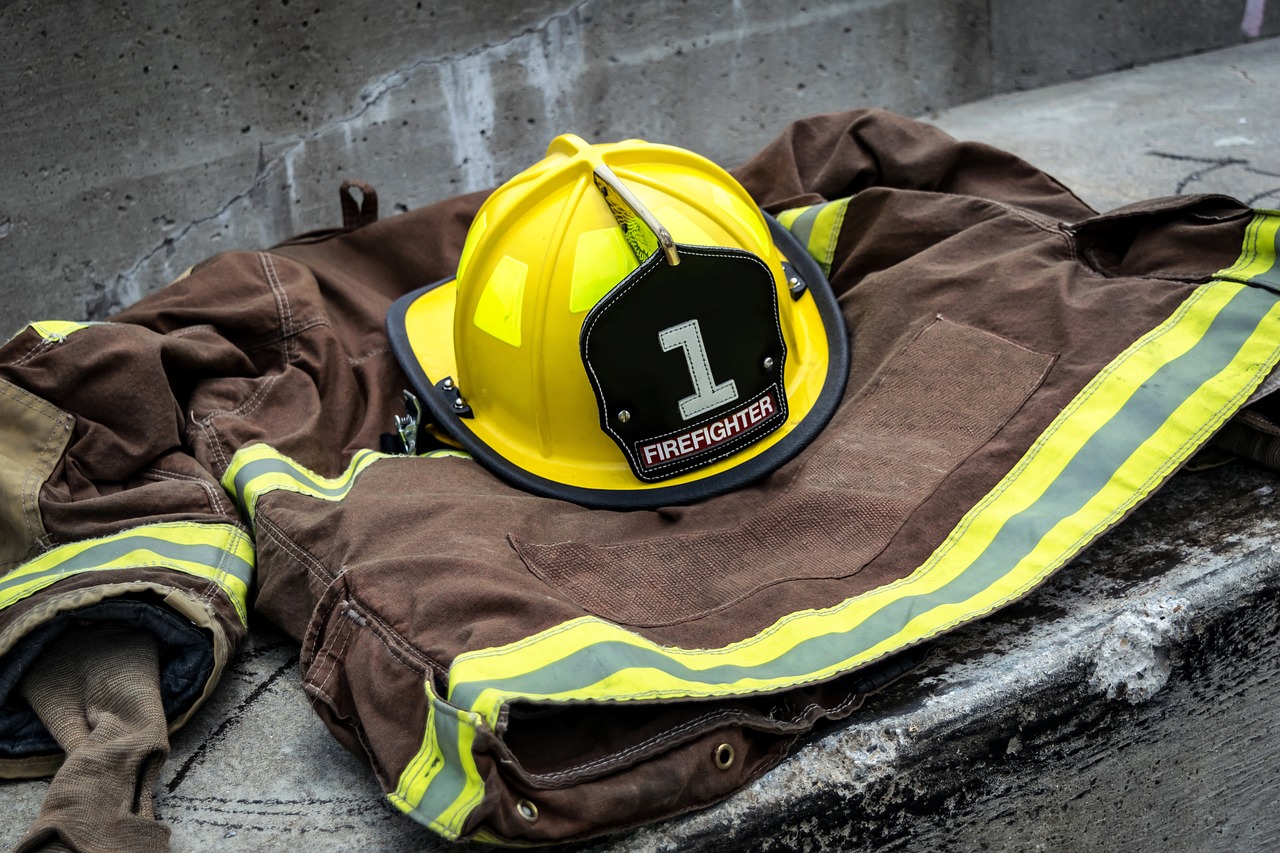
Trail Etiquette and Safety
When you step onto a hiking trail, you’re not just embarking on a personal adventure; you’re entering a shared space that requires a bit of courtesy and respect for both fellow hikers and the environment. Imagine this: you’re on a beautiful, serene trail, surrounded by towering trees and the sound of chirping birds. Suddenly, a group of loud hikers comes barreling through, disrupting the peaceful atmosphere. Not only is it jarring, but it also detracts from everyone’s experience. This is where trail etiquette comes into play. It’s all about being mindful of others and the natural surroundings.
One of the most important rules of trail etiquette is to yield the trail. If you’re hiking downhill, it’s your responsibility to give way to those coming uphill. Think of it as a simple act of kindness; after all, those climbing up are often exerting more effort and could use a little help. Also, if you’re with a group, make sure to hike single file in narrow areas so that you don’t block the path for others. This small gesture can significantly enhance the experience for everyone involved.
Another crucial aspect of trail etiquette is keeping noise levels down. While it’s tempting to chat loudly or blast music, remember that other hikers might be seeking a peaceful escape. Instead, try to engage in quieter conversations and enjoy the sounds of nature. If you do come across someone who seems to be struggling, offer assistance, but do so respectfully and without overwhelming them. It’s all about creating a supportive community on the trails.
Let’s not forget about our furry friends! If you’re hiking with a dog, ensure that they are kept on a leash and under control. Not everyone is comfortable around dogs, and a sudden approach can cause anxiety. Furthermore, always clean up after your pet. Not only is it courteous, but it also helps protect the local wildlife and keeps the trails clean for others.
As you hike, be mindful of the environment. Stay on marked trails to prevent damaging delicate ecosystems. Straying off the path can lead to soil erosion and disturb wildlife habitats. Carry out what you carry in—this means no littering! If you see trash, consider picking it up. It’s a simple act that can make a big difference. In fact, you might even inspire others to do the same!
Lastly, it’s essential to be aware of your surroundings and the people in them. If you encounter someone who appears to be in distress, don’t hesitate to offer help or notify a ranger if necessary. Hiking is a shared experience, and looking out for one another is part of what makes it so rewarding.
In summary, trail etiquette is about creating a positive hiking experience for everyone. By practicing these simple guidelines, you contribute to a culture of respect and safety on the trails. So, the next time you hit the hiking paths, remember that your actions can either enhance or detract from someone else's experience. Let’s keep our trails enjoyable for all!
Here are some common questions hikers have regarding trail etiquette and safety:
- What should I do if I encounter wildlife on the trail? - Keep a safe distance and do not feed or approach the animals.
- Is it okay to hike with headphones on? - While it’s not prohibited, it’s best to keep one ear free to hear your surroundings, especially if others are approaching.
- How can I ensure I’m following Leave No Trace principles? - Familiarize yourself with the seven Leave No Trace principles and practice them on every hike.
- What should I do if I get lost on the trail? - Stay calm, retrace your steps if possible, and use a map or GPS if you have one. If you’re unable to find your way, signal for help.

Emergency Preparedness
When it comes to hiking, being prepared for emergencies is not just a good idea; it’s essential. Imagine you’re out on a beautiful trail, surrounded by nature, when suddenly things take a turn for the worse. A sprained ankle, sudden weather changes, or even getting lost can transform a delightful hike into a daunting situation. That’s why having a solid emergency preparedness plan is your best friend on the trails.
Before you lace up your hiking boots, it’s important to create a comprehensive plan. This means not only letting someone know your intended route and expected return time but also familiarizing yourself with the area you’ll be hiking. A good rule of thumb is to always have a backup plan. What will you do if the trail is closed or if you encounter unexpected weather conditions? Being mentally prepared for these scenarios can make all the difference.
Additionally, packing a well-stocked first aid kit is crucial. This kit should not only contain the basics like band-aids and antiseptic wipes but also items tailored to your specific needs. For example, if you have allergies, include antihistamines. If you’re prone to headaches, pack some pain relievers. Here’s a quick rundown of what your first aid kit should ideally include:
- Adhesive bandages of various sizes
- Antiseptic wipes
- Gauze pads and tape
- Elastic bandage for sprains
- Antihistamines for allergic reactions
- Personal medications
- Emergency blanket
But wait, there’s more! Communication tools can be a lifesaver. In this digital age, it’s easy to assume that your mobile phone will always work, but what if you find yourself in a remote area with no signal? Consider investing in a satellite phone or a personal locator beacon (PLB). These devices can help you communicate your location to rescuers in case of an emergency, even when traditional cell service fails.
It’s also wise to familiarize yourself with basic first aid skills. Knowing how to treat a cut, manage a sprain, or even perform CPR can be invaluable. You don’t need to become a medical expert, but a little knowledge can go a long way. Consider taking a first aid course before your next adventure. Not only will you gain confidence, but you’ll also be better equipped to handle any situation that might arise.
In summary, emergency preparedness is all about being proactive. It’s about taking the time to plan, pack smartly, and equip yourself with the knowledge and tools necessary to handle unexpected situations. So, before you hit the trails, ask yourself: Are you really prepared for the unexpected? Remember, a little preparation can turn potential disasters into mere bumps in the road on your hiking journey.
Q: What should I do if I get lost while hiking?
A: If you find yourself lost, the first step is to stay calm. Try to retrace your steps to the last known point, and if that doesn’t work, use your map, compass, or GPS device to determine your location. If you cannot find your way back, stay put and signal for help.
Q: How can I prepare for sudden weather changes?
A: Always check the weather forecast before your hike. Dress in layers and carry a rain jacket or extra warm clothing. Be aware of the signs of changing weather, and if conditions worsen, consider turning back to ensure your safety.
Q: What should I include in my emergency kit?
A: Your emergency kit should include first aid supplies, a flashlight, extra food and water, a whistle, a multi-tool, and any personal medications. Tailor it to your specific needs and the length of your hike.
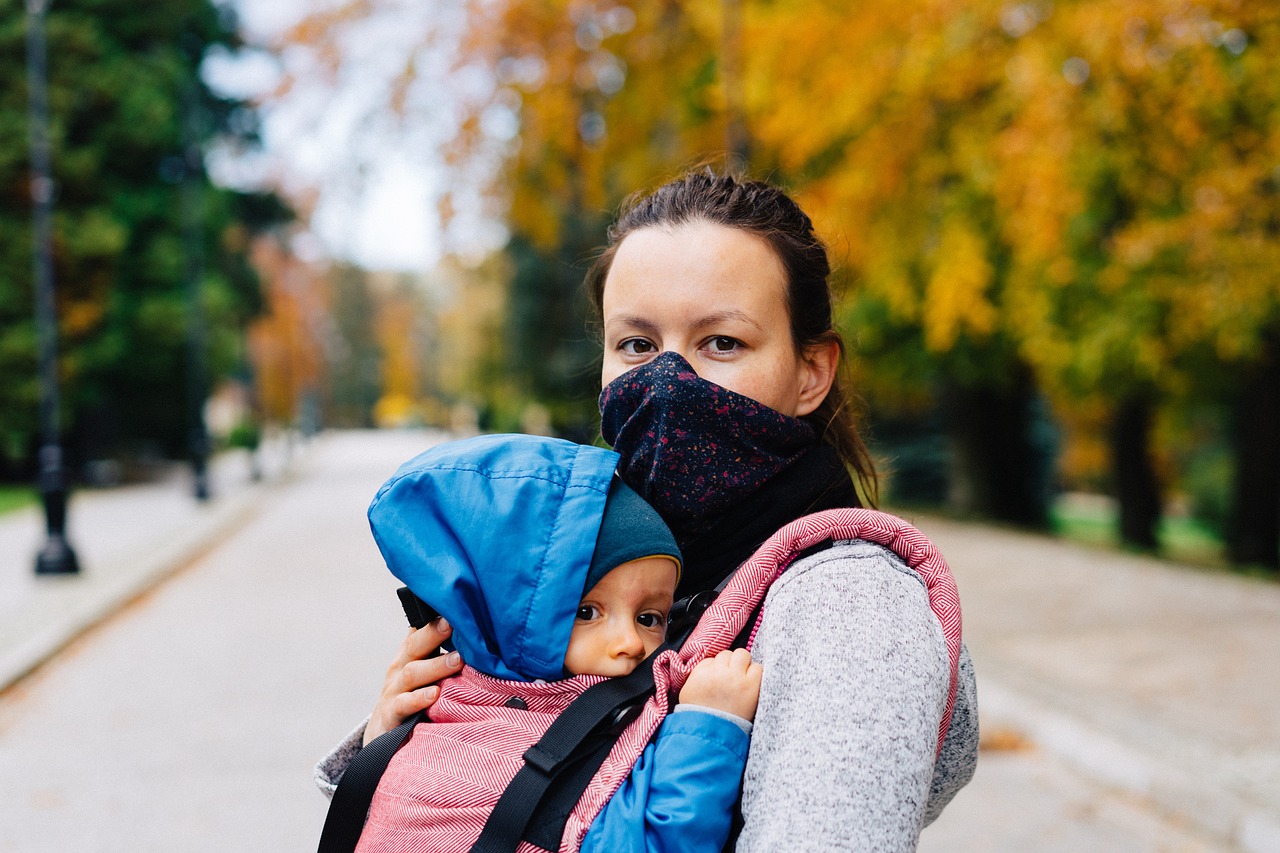
First Aid Basics
When it comes to hiking, being equipped with first aid knowledge can be a game changer. Imagine you're out in the wilderness, surrounded by stunning views, and suddenly, someone in your group takes a tumble. What do you do? This is where understanding becomes crucial. First aid is not just about having a kit; it's about knowing how to use it effectively. A well-prepared hiker can make all the difference in ensuring safety and comfort on the trail.
Before you hit the trails, it’s essential to familiarize yourself with some fundamental first aid skills. Here are a few critical areas to focus on:
- Wound Care: Knowing how to clean and dress a wound can prevent infections. Always carry antiseptic wipes and adhesive bandages in your first aid kit.
- CPR and Choking: Basic CPR knowledge can save a life in emergencies. Take a course if you can, and remember the universal sign for choking.
- Managing Sprains and Strains: If someone twists an ankle, understanding the R.I.C.E method (Rest, Ice, Compression, Elevation) can help reduce swelling and pain.
It's not just about the physical skills, though. You also need to know how to assess the situation. Ask yourself questions like: Is this injury serious? Do I need to call for help? What resources do I have at my disposal? These questions will guide your response and ensure that you're making the right decisions in stressful situations.
Additionally, always carry a well-stocked first aid kit. Here’s a quick overview of what to include:
| Item | Purpose |
|---|---|
| Adhesive Bandages | For minor cuts and scrapes. |
| Gauze Pads | For larger wounds that need to be covered. |
| Antiseptic Wipes | To clean wounds and prevent infection. |
| Elastic Bandage | For sprains or strains. |
| Scissors and Tweezers | To cut bandages and remove splinters. |
| First Aid Manual | A guide for reference in emergencies. |
Remember, first aid is about being proactive. The more prepared you are, the more confident you'll feel on the trail. Take the time to practice these skills and ensure your first aid kit is always stocked and ready to go. It's not just about protecting yourself; it's about looking out for your fellow hikers too. After all, we’re all in this together, right?
Q: What should I do if someone is severely injured?
A: Call for emergency services immediately. While waiting for help, try to keep the person calm and still. Provide first aid as needed without moving them excessively.
Q: How often should I check my first aid kit?
A: It's a good idea to check your first aid kit before every hike. Replace any expired items and ensure everything is stocked.
Q: Can I take a first aid course online?
A: Yes, many organizations offer online first aid and CPR courses. However, practical skills are best learned in person, so consider a hands-on class if possible.
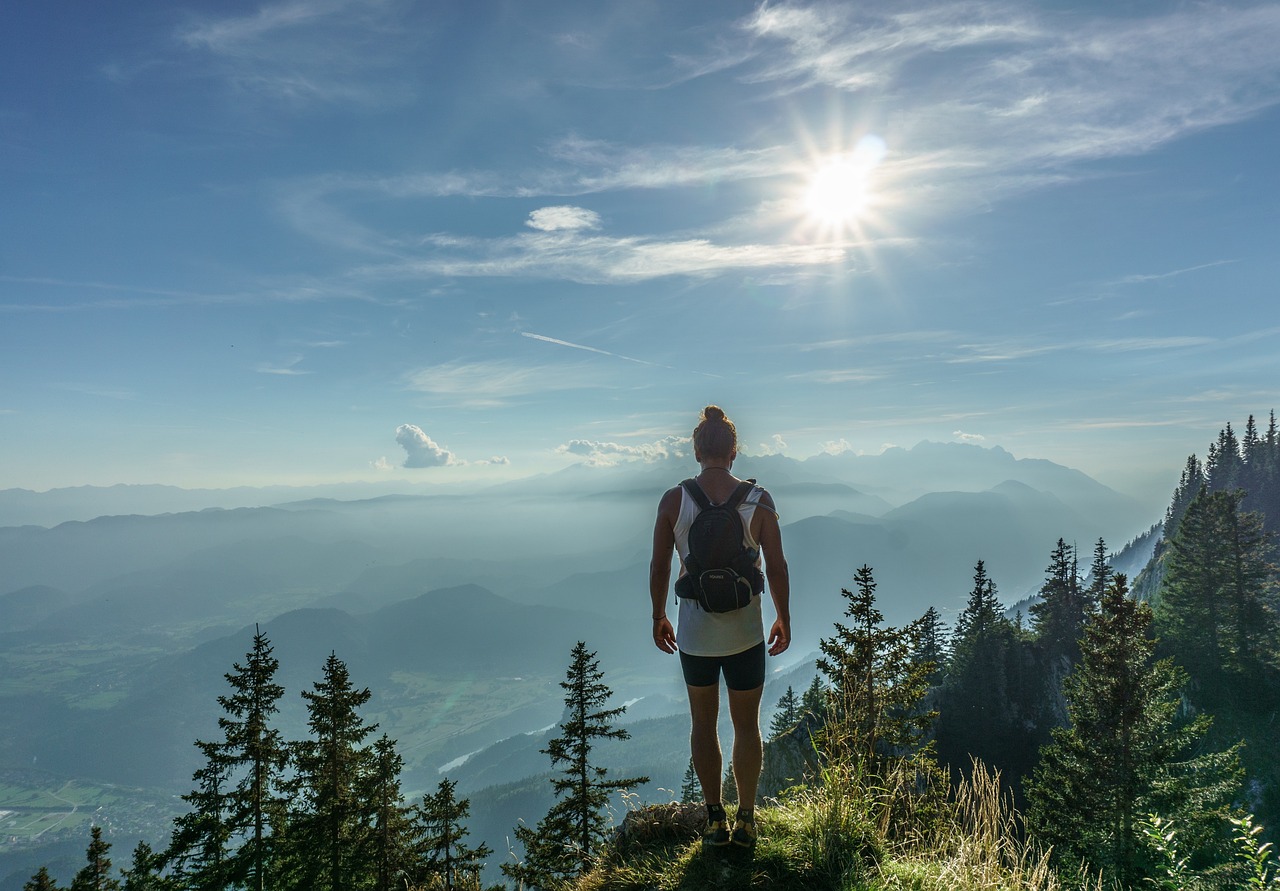
Communication Tools
When you're out there in the wild, surrounded by nature's beauty, it’s easy to forget that things can go south in a heartbeat. That's why having reliable is not just a luxury—it's a necessity. Imagine hiking up a breathtaking mountain, only to find yourself lost or injured. Suddenly, that stunning view doesn’t seem so appealing anymore, does it? To keep your adventure safe and enjoyable, let’s dive into the various communication options that can keep you connected.
First up, the trusty mobile phone. It’s likely the most accessible tool for most hikers. However, don’t let its convenience fool you. Cell service can be spotty, especially in remote areas. Before you head out, make sure to check the coverage maps for your hiking destination. If you know you’ll be venturing into areas with limited service, consider downloading offline maps or a hiking app that works without a signal.
Now, if you really want to take your communication game to the next level, think about investing in a satellite phone or a personal locator beacon (PLB). These devices can be lifesavers in emergencies. While they may come with a higher price tag, the peace of mind they offer is invaluable. Here’s a quick comparison to help you understand their differences:
| Device | Pros | Cons |
|---|---|---|
| Mobile Phone | Easy to use, multi-functional, widely available | Limited service in remote areas, battery life concerns |
| Satellite Phone | Works anywhere, reliable for emergencies | Expensive, bulky, requires a clear line of sight to satellites |
| Personal Locator Beacon (PLB) | Emergency SOS feature, no subscription fees | Only for emergencies, limited communication capabilities |
Additionally, consider using two-way radios. If you're hiking with a group, these devices can keep everyone in touch without relying on cellular networks. They’re especially handy for communicating over long distances or through dense forests where signals might fade. Just remember to check the range and battery life before you set off.
Lastly, never underestimate the power of good old-fashioned signaling techniques. Whistles, mirrors, and brightly colored flags can be effective in getting the attention of rescuers if you find yourself in a bind. Sometimes, the simplest tools are the most effective!
In summary, ensuring you have the right communication tools can make all the difference in your hiking experience. It’s not just about staying in touch with friends and family; it’s about ensuring your safety and being prepared for the unexpected. So, gear up, stay connected, and enjoy every moment of your adventure!
- What should I do if I get lost while hiking? Stay calm, retrace your steps if possible, and use your communication tools to call for help.
- How can I ensure my phone stays charged during a long hike? Consider bringing a portable charger or a solar charger to keep your devices powered.
- Are satellite phones worth the investment? If you frequently hike in remote areas, they can provide peace of mind and potentially save your life.
Frequently Asked Questions
- What essential gear should I bring for a safe hike?
When heading out for a hike, it's crucial to pack the right gear. You should include items such as a sturdy pair of hiking boots, weather-appropriate clothing, a first aid kit, a map or GPS device, sufficient water, and snacks. Don't forget a flashlight or headlamp, especially if you're planning to hike during early morning or late evening hours!
- How can I assess trail conditions before my hike?
Before you hit the trails, check local resources like park websites or outdoor forums for trail conditions. Look for updates on weather, trail maintenance, and any hazards like fallen trees or flooding. It's also a good idea to talk to fellow hikers or park rangers for the latest information.
- What should I do if the weather changes suddenly while hiking?
If you notice a sudden change in weather, such as dark clouds or a drop in temperature, it’s important to act quickly. Find a safe place to take shelter, put on any extra layers you have, and avoid exposed areas. If conditions worsen, it may be best to turn back and head to safety.
- How can I stay safe while hiking in hot weather?
Staying safe in the heat requires some preparation. Make sure to drink plenty of water before, during, and after your hike. Wear lightweight, breathable clothing, and use sunscreen to protect your skin. If possible, hike during the cooler parts of the day, like early morning or late afternoon.
- What are some important first aid skills I should know?
Basic first aid skills can be lifesavers on the trail. Familiarize yourself with how to treat cuts, scrapes, and blisters. Learn how to recognize signs of heat exhaustion or hypothermia, and know how to perform CPR. Consider taking a first aid course to boost your confidence and skills.
- What communication tools are best for hiking?
Staying connected while hiking is essential for safety. A fully charged mobile phone can be useful, but don’t rely on it alone, as signal may be weak or nonexistent in remote areas. Consider carrying a satellite phone or a personal locator beacon for emergencies, especially on longer hikes.
- How can I practice good trail etiquette?
Good trail etiquette is all about respecting other hikers and the environment. Always yield to those going uphill, stay on marked paths, and pack out what you pack in. If you're hiking with a pet, keep them leashed and clean up after them to ensure everyone enjoys the trails.



















